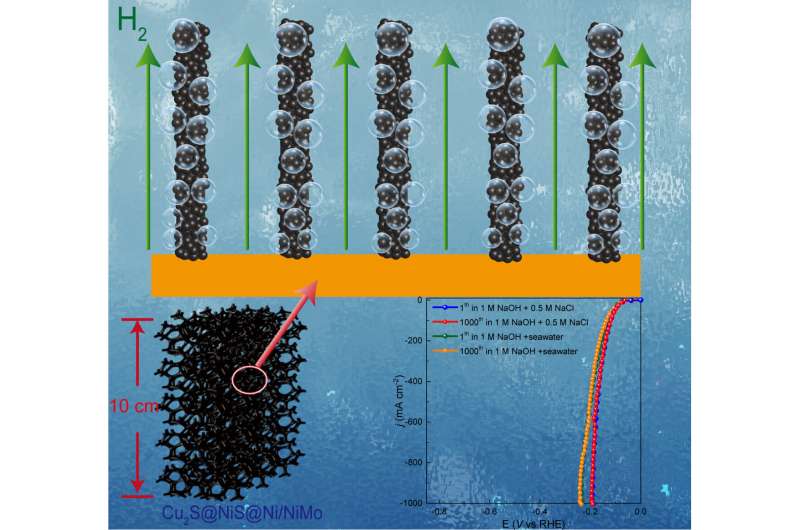Researchers at Ningbo Institute of Materials Technology and Engineering have proposed an affordable hybrid cathode for enhanced seawater electrolysis in hydrogen production.

Seawater electrolysis offers a means to generate hydrogen, providing a sustainable approach to energy conversion and storage while preserving freshwater resources. This process, driven by offshore renewable energy sources like solar, wind, and tidal power, presents a promising avenue for producing green hydrogen and supporting efforts towards carbon peaking and carbon neutrality. However, the performance of hydrogen generation has been constrained by the intricate variability of offshore renewable energy, particularly in extreme conditions.
Researchers at Ningbo Institute of Materials Technology and Engineering (NIMTE) of the Chinese Academy of Sciences (CAS) have proposed an efficient and affordable method to synthesize a hybrid cathode for enhanced seawater electrolysis in hydrogen production. The scientists put forward a simple approach that includes etching, sulfuration, and electrodeposition as a means to create a Cu2S@NiS@Ni/NiMo cathode on a 10 × 10 cm2 scale.
The combined cathode demonstrated remarkable performance in hydrogen evolution, showcasing overpotentials of 190 and 250 mV at a current density of 1,000 mA cm-2 in both alkaline artificial seawater and real seawater, respectively. Furthermore, the nanoarray structure with superaerophobic properties facilitates efficient hydrogen mass transport even under high current density conditions. During steady-state conditions, the developed cathode demonstrated exceptional stability with minimal overpotential loss even after more than 2,000 hours at 500 mA cm-2. This signifies the remarkable long-term stability of the cathode.
Despite the challenging and fluctuating nature of offshore renewable energy, the hybrid cathode exhibited remarkable anti-corrosion properties, showcasing endurance of 1,500 hours even under accelerated start/stop practical conditions. The study has presented an efficient approach for synthesizing high-performance cathodes suitable for industrial-scale hydrogen generation through seawater electrolysis.
Furthermore, the evaluation of both performance and costs has highlighted the significant potential of the synthesized cathode in facilitating sustainable hydrogen production on an industrial scale.
Reference: Wenwen Xu et al, Scalable Fabrication of Cu2S@NiS@Ni/NiMo Hybrid Cathode for High‐Performance Seawater Electrolysis, Advanced Functional Materials (2023). DOI: 10.1002/adfm.202302263






